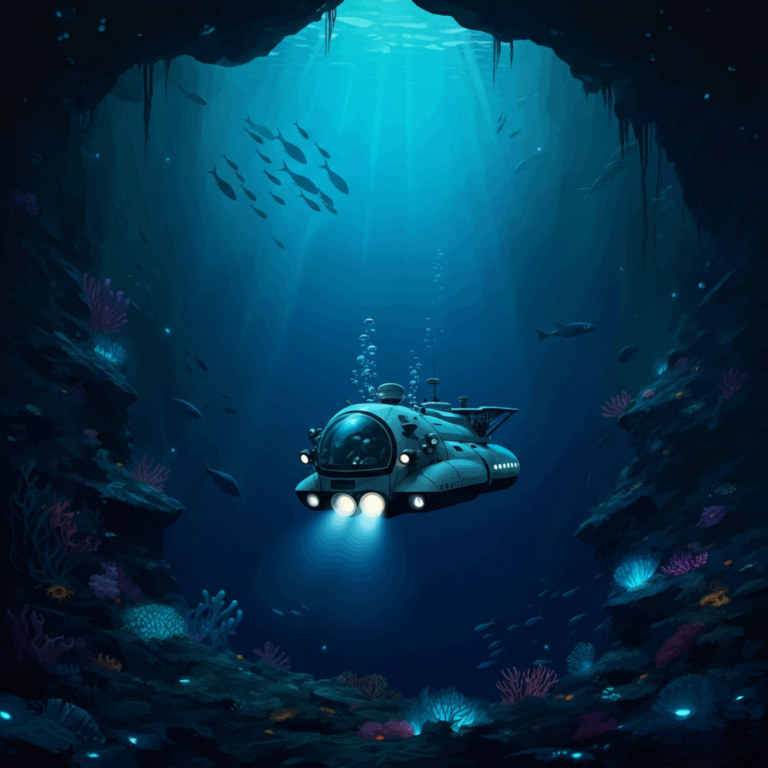The depths of the Earth hold secrets that are as captivating as they are mysterious. From vast underwater trenches to towering subterranean caves, the world’s deepest places reveal the unimaginable wonders and extremes our planet has to offer. But what makes them so extraordinary?
This article takes you on an exploration of these record-breaking locations, sharing fascinating facts that will leave you in awe of the complexity and beauty hidden beneath our feet—or beneath the waves. Whether you’re a science enthusiast, an adventurer at heart, or simply curious about the unknown, you’ll discover something remarkable. Let’s dive in, literally and figuratively.
What Do We Mean by “Deepest Places”?
To fully appreciate these marvels, it’s essential to clarify what we mean by “deepest.” Depth, in this context, refers to the vertical distance we measure below a reference point—often sea level for underwater features, or the earth’s surface for terrestrial features. Some depths are natural, like the Mariana Trench, while others are manmade, like the world’s deepest mines.
Now, with that clear, let’s jump into some mind-blowing examples.
Plunging Into the World’s Deepest Ocean Trench
The Mariana Trench
The Mariana Trench, which lies in the western Pacific Ocean, holds the title of being the deepest known point on Earth’s seabed.
- Depth: At its deepest point, called Challenger Deep, the trench plunges approximately 36,000 feet (11,000 meters) below the ocean surface—nearly seven miles deep. For context, Mount Everest would be completely submerged with almost 7,000 feet to spare.
- Pressure: The pressure at the bottom of Challenger Deep is over 1,000 times greater than at sea level. Imagine the weight of 50 jumbo jets pressing down on a single point—that’s the force experienced there.
- Life at Depth: Despite such extreme environments, Challenger Deep is not devoid of life. Microorganisms, amphipods, and other extremophiles thrive there, showcasing the resilience of life.
Fun Fact:
Explorer Victor Vescovo completed the deepest solo submersible descent to Challenger Deep in 2019. He spent hours navigating the trench, marking one of humanity’s most remarkable achievements in exploring our oceans.
The Deepest Point on Land Isn’t Where You Think
You might assume the planet’s deepest natural terrestrial point would be a massive cavern or gorge. Surprisingly, it’s tucked away beneath glacial ice.
The Bentley Subglacial Trench
Located in Antarctica, the Bentley Subglacial Trench is 8,383 feet (2,555 meters) below sea level, making it the lowest natural point on land that is not covered by an ocean. However, the trench is buried under nearly 10,000 feet of ice, making access a logistical nightmare.
Why is it Important?
Scientists are intensely interested in the Bentley Subglacial Trench for its potential role in climate studies. The ice and sediment there could reveal critical information about Earth’s ancient climate cycles and the stability of modern-day glaciers.
Subterranean Floors of Wonder
Krubera Cave – The Deepest Cave on Earth
Found in the Arabika Massif area of Georgia’s Western Caucasus Mountains, Krubera Cave—also known as the Voronya Cave—is the deepest-known cave on Earth, stretching downward more than 7,200 feet (2,200 meters).
- Exploration: First mapped in the 1960s, the cave earned its reputation as an adventurer’s dream—and nightmare. Descending through its labyrinth of narrow tunnels, vertical drops, and rushing water takes weeks and requires tremendous skill.
- Ecosystem: Specimens of unique cave-dwelling species, like translucent fish and amphipods, call this pitch-black world home.
Manmade Depths That Stagger the Mind
Natural depths may be amazing, but humans have also created record-breaking excavations that plunge deep into the Earth.
The Kola Superdeep Borehole
Located in Russia, the Kola Superdeep Borehole deserves its title as the deepest artificial point in the Earth’s crust. Drilled during Soviet scientific projects spanning several decades, the borehole reaches a depth of 7.5 miles (12 kilometers).
What’s surprising is that this depth is just a fraction of the way to the Earth’s core—proof of how challenging even minor intrusions can be into our planet’s interior. At the bottom of the borehole, temperatures soared to 356°F (180°C), preventing further drilling.
Deep Mines and Resources
Manmade depths aren’t limited to science. The Mponeng Gold Mine in South Africa, at more than 2.5 miles (4 kilometers) deep, is the planet’s deepest operational mine. Workers endure extreme temperatures and cramped conditions to extract precious metals.
Fascinating Extremes of Freshwater Depth
Lake Baikal – The Deepest Freshwater Lake
Nestled in Siberia, Lake Baikal is both the deepest and oldest freshwater lake on the planet. It plunges 5,387 feet (1,642 meters) at its deepest point and contains about 20% of the world’s unfrozen fresh water.
- Biodiversity: Lake Baikal hosts over 1,700 species of flora and fauna, two-thirds of which are found nowhere else on Earth.
- Human Connection: The lake has been a center of fascination for centuries, celebrated in Russian culture as a near-mythical location.
Why Do These Depths Matter?
While these locations stun with their sheer magnitude, understanding them serves a profound scientific and cultural purpose:
- Exploration of Life: From extremophiles in Challenger Deep to unknown species in Krubera Cave, these environments offer insights into life’s resilience and adaptability.
- Climate Science: Areas like the Bentley Subglacial Trench provide critical information about Earth’s environmental past and future, especially in the face of rising temperatures.
- Resource Management: Mines and boreholes illustrate humanity’s quest and reliance on resources buried in Earth’s layers.
- Geological Knowledge: These depths help us understand planetary formation and tectonic activity, which are crucial for predicting natural phenomena like earthquakes.
How Can You Explore the Deeper Wonders of the World?
Though few of us will venture to Challenger Deep or descend into Krubera Cave, there are ways to get involved:
- Virtual Learning: Platforms like National Geographic and NOAA (National Oceanic and Atmospheric Administration) offer interactive maps and videos that bring these extraordinary places to life.
- Support Research: Many expeditions rely on contributions. Organizations like the Ocean Exploration Trust fund studies into unexplored ocean regions.
- Dive Into Documentaries: Films like Deepsea Challenge or Journey to the Center of the Earth provide compelling views of subterranean and underwater exploration.
Unveiling a World of Wonder
Our planet’s deepest places remind us that Earth’s greatest secrets lie not in space, but just beneath our feet—or under our oceans. From their breathtaking biodiversity to their role in advancing science, they serve as testaments to the awe and infinity of nature.
If you’ve been inspired by this glimpse into Earth’s depths, take your curiosity further. Pick a documentary to watch this weekend, participate in a virtual expedition, or even just look up Challenger Deep for a closer study. You never know what wonder you’ll uncover next.





















0 Comments